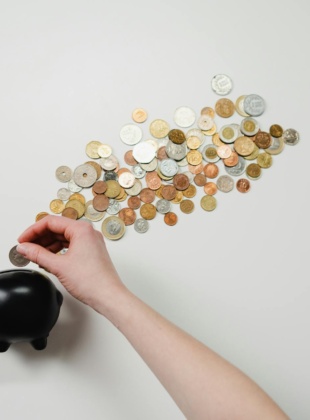Meet the new frugal consumer
They’ve traded down and they like it

Are you giving them what they want?
The recent recession has radically altered consumer behaviour, based on a change of personal circumstance or fear of such a change. Our research indicates that whilst the levels of financially-based fears are decreasing and consumer confidence seems to be recovering, the recession-hardy are embracing a new norm. Spurred on by advances in technology, distrust in big brands and desire for a good deal, these consumers will continue to embrace recessionary behaviours. They are frugal and proud of it! Like modern day Mr Micawbers they have learned that debt leads to misery, a lesson it will take a long time to forget.
Marketing managers who are hoping for a rapid return to pre-recessionary spending habits will need to face up to this new reality and must adjust to this transformed consumer landscape.
New brands have arrived and some existing brands have adapted well during the recession, perfectly positioned to take advantage of this extended shift in consumer behaviour. What is your strategy? What is your plan for growth? Do you really understand what your customers now expect from you and are you giving them what they want?
Positive signals
We are half way through 2013 and things appear to be looking up. While the recession technically ended at the close of Q2 2012, business and consumer confidence indices bounced up and down towards the back end of last year. 2013, however, seems to have brought signs of recovery.
The Lloyds TSB Spending Power Report for April reveals that consumer confidence improved during the month, with their Consumer Sentiment Index reaching a record equalling high of 109 points, only the second time the Index has reached this level since it began in November 2010, compared with an all-time low of 90 points in March 2011. Lloyds TSB attributes this improvement to a greater optimism about the current environment, including the housing market, personal finances and the UK?s financial situation.
Combining this with the fact that in May the CBI Industrial Trends survey indicated that more manufacturers thought that output would increase over the next three months than thought it would fall, twenty one points higher than May 2012, you get a sense that things seem to be looking up.
Tread carefully ? don?t spend the entire marketing budget just yet
The Opinium Consumer Hopes, Fears and Spending Intentions Tracker asks consumers to indicate their main hopes and fears for the following six months and then tries to understand their spending intentions across a number of areas. It currently shows a relative increase in confidence, or decline in fear, but no immediate signs of increased consumer spending.
Fear is a major driver of consumer behaviour; if you fear something happening, such as ?not being able to make ends meet?, you will be more likely to change your behaviour to prevent that fear from becoming reality.
However, our research shows no significant changes in spending intentions across the three major categories we track; leisure & entertainment, eating & drinking and non-essentials. In fact the 2013 data is almost a mirror image of our 2011 and 2012 surveys, which means that although economic fears are subsiding, this is not having an immediate effect on spending intentions.
Low levels of trust
Consumers are still struggling to trust big business. In the 2013 Opinium Trust Survey, run with Lansons Communications, a third of UK adults said they trust companies less than they did last year. Just over fifty per cent say they are dissatisfied with how big business capitalism operates in Britain at the moment. Consumers cite corporate ?greed? as the main driver for their decision, followed by ?tax avoidance issues?, then ?poor customer service?, ?corruption and dishonesty?, ?an unfair society? and ?low levels of social responsibility?.
Getting a kick out of trading down
Research shows that since 2007 a huge proportion of consumers across all socio economic groups planned to and eventually did change their consumption behaviours, reducing or postponing their spending, making more use of the internet to compare and select the best offers, often compromising on quality to reduce their spending.
Through multiple focus groups and large quantitative surveys for a variety of clients we’ve discovered that many consumers, from a variety of social classes, have been pleasantly surprised by what they have found on their way down the ?frugal ladder?; some are quite proud of their achievements. Different groups of people have experienced different recessions, but there is evidence that even those on higher incomes have traded down on certain products, as finding a deal becomes the new ?splash-out? experience.
A separate McKinsey study from the US found that of the forty six per cent of consumers that traded down to lower priced brand said that they performed better than expected, and a large majority of these consumers said the performance of such products was much better than expected and as a result thirty four per cent of these switchers said they no longer preferred higher priced products, and an additional forty one per cent said that while they preferred the premium brand, it ?was not worth the money.?

Are you giving them what they want?
1.tThe landscape has shifted. The new frugal consumer is unlikely to go back to spending beyond his or her means on discretionary purchases. It?s time to reassess who your customer segments are and how they behave. Focus on what customers want and need now; don?t assume things will ever get back to ?normal?.
2.tPrice wars will only get you so far. Are you trustworthy? Are you transparently honest? Environmentally friendly? Do you provide an authentic experience? Do you provide value? Revisit the proposition you offer your customers ? is it fit for purpose?
3.tYour website is a crucial explanation of your brand and proposition. You know what you?re trying to say, but does your customer?
4.tIt?s time to get serious about service. One bad experience, one tweet, could cause a stampede. Are you on top of your customer service as well as your social media channels?
5.tAre you using your existing customer data to uncover hidden competitive advantages unavailable to your competitors? If not, why not?




